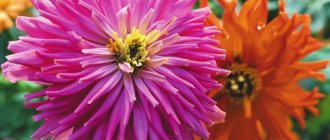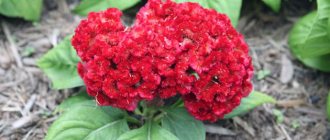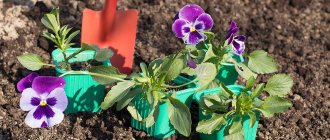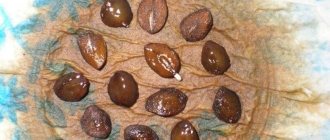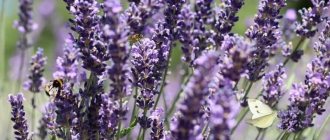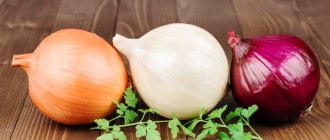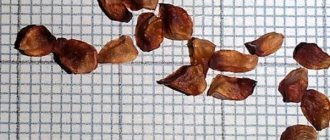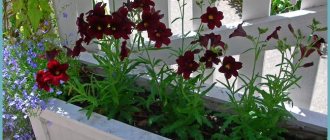Conditions for growing aster
For the flower bed in which the asters will grow, you need to select an area protected from the winds and open to the sun's rays. Asters will also grow in partial shade. The soil must be drained, well permeable to air and moisture. Loams and sandy loam soil with an acidity level of 6.5-7.5 pH are best suited for asters.
On a note! Too acidic and heavy soil can lead to fusarium disease. This is also facilitated by the addition of humus in the year of planting.
To reduce the risk of disease, asters should not be planted after:
- gladioli;
- carnation;
- tulips.
You can plant asters after your own kind no earlier than after 4-5 years. The best predecessors for “autumn roses” are marigolds, marigolds, and perennial herbs. Asters will also grow well on land that was fallow. Experts recommend planting these flowers in the same place for no more than 3-4 years in a row.
When making soil, it is best to use the following components:
- turf – 3 parts;
- humus – 1 part;
- sand – 0.5 parts.
You can replace humus with peat, increasing its share in the mixture by 2 times. The same land will be suitable for seedlings. The sand must be washed and calcined, and the soil must be spilled with a solution of potassium permanganate. During growth, asters are most suitable for moderate temperatures and humidity in the range of 60-70%. In dry and hot weather, the decorative value of inflorescences decreases, and the quantity and quality of seeds suffers. Astra does not like close groundwater and waterlogging of the soil.
Methods for sowing aster seeds
Aster seeds can be sown in spring, autumn and winter.
Early spring
Sow seeds when the soil is ready. In the regions of the Central Non-Black Earth Region, this period occurs at the end of April or beginning of May. Shallow furrows (up to 2 cm) are laid in the prepared beds.
The sown seeds are poured out of a watering can with a fine strainer and mulched with a thin layer of garden soil or humus.
Typically, seedlings are not watered until seedlings emerge. However, in case of a windy or dry spring, the beds can be watered a little. After 10-12 days, the first shoots appear.
Late autumn sowing
Such sowing in our latitudes is carried out with the onset of stable frosts and freezing of the top layer of soil. As a rule, this is the second ten days of November. Seeds are sown in furrows prepared in early autumn and mulched to a depth of 2-2.5 cm.
Weathered peat or unfrozen humus is suitable as mulch In the spring, when the soil thaws, it is recommended to loosen the crops.
We have prepared a good article for you about diseases of domestic violets.
What care do violets need in winter? Take note of these useful tips.
Fragrant geranium https://sad-doma.net/houseplants/dekarativnotsvetushhie/geran/lechebnye-svoystva-gerani.html has medicinal properties. Find out in more detail - which ones.
Winter sowing
This sowing is carried out from December to the end of January. Seeds are sown on a layer of snow 10-15 cm in place of future beds and mulched with peat compost or humus.
planted in autumn and winter, plants grow stronger and are less likely to suffer from fusarium. After the seedlings emerge in the spring, they are thinned out and fed regularly.
When to plant aster for seedlings
The timing of sowing aster will vary depending on the variety and weather conditions of a particular region. In warm areas it is planted in early May, the deadline for sowing is the 1st ten days of June. And if the region is cold, it is better to sow flowers in late March - early April. The growing season must also be taken into account. For different varieties, from the moment of germination to the appearance of the first flowers, it takes from 80 to 130 days.
The time of sowing will also be affected by when you want to get flowering. Some want to see blooming asters on the site already in the middle of summer, others need to time this moment to September 1 or an even later date. The growing season by variety will be as follows:
- early asters – 80-90 days;
- mid-early asters – 110 days;
- late asters – 120-130 days.
The information on the seed packaging will help you calculate the correct planting time.
If you want to get continuous flowering, seedlings are planted in several stages with short intervals of time. Then the flowerbed will delight you with bright colors for a long period.
Sowing time
The question arises when is the best time to start preparing plant seedlings. It is necessary to take into account that the flower will reach the formed bushes only after a month and a half. When to plant asters for seedlings, the climatic conditions of the region will tell you. In Siberia, May is still a cold month, so young plants may not survive. The ground must warm up enough for the roots to take root well. The possibility of frost should be completely excluded.
When to sow asters for seedlings in cold regions, and what the timing depends on: mid-March and April are considered the optimal time. Before transplanting, the flowers will get stronger and can be safely transferred to the ground.
When to plant seedlings in different regions of the country so that the seedlings do not outgrow:
- in the middle zone it is quite warm by mid-May, so aster for open ground is sown in early April;
- in the southern regions spring comes quickly, so planting dates fall at the end of March;
- for Siberia and the Urals, asters and zinnias are sown at the end of April, since flowers can be transferred to the ground no earlier than the beginning of June.
When is the right time to start growing aster from seeds at home into seedlings: on average, sowing occurs in March and April. To be sure, you can use the astrological calendar.
Growing seedlings at home
The quality of seedlings largely depends on properly selected soil and seeds. First of all, it is necessary to carry out pre-sowing treatment of both, and then provide the necessary conditions for growth. Only in this case will the seedlings be friendly, and the plants will be strong and healthy.
Land preparation
For seedlings, you can use a ready-made substrate purchased in a store, to which a little coarse sand is added before sowing to make the soil mixture looser. Sand will also be needed to sprinkle the crops.
You can make the mixture yourself using turf soil, peat and sand in a ratio of 2:1:0.5. The components are thoroughly mixed and a little dolomite flour or ash is added to improve the quality of the soil.
On a note! Some gardeners successfully use a mixture of vermicompost and coconut fiber in a 1:2 ratio as a substrate for aster seedlings.
The soil will need to be disinfected by calcining it in the oven or scalding it with boiling water. Instead of calcination, you can use treatment with a strong solution of potassium permanganate. This rule must be observed when preparing the mixture yourself. If the primer is produced by a well-known manufacturer, this step can be skipped.
Seed preparation
Preparing seeds begins with their purchase. By now you should already have a plan for laying out your flower garden in order to choose the right varieties and colors of asters. If you plant flowers in a multi-tiered flower bed, then you need to take into account the height of adult plants. Low-growing asters are suitable for the background; tall varieties are planted in the last row.
When choosing, give preference to fresher seeds; they will have better germination. The seeds can also be collected by yourself if you like the variety that you are already growing. The seed material of asters is very small, so before processing it is better to wrap it in cloth, it will be more convenient for you.
Pre-sowing treatment of seeds consists of soaking them in a solution of potassium permanganate - this allows you to kill all pathogenic bacteria and fungal spores. You will need to prepare a weak solution of potassium permanganate and immerse a bag of seeds in it for 2-3 hours. Then the treated seeds are washed in clean water and dried. Those seeds that are sold in the form of pills do not require soaking.
If you want to get seedlings faster, the seed material can be germinated. But you don't have to do this. For germination, the seeds are not dried after soaking, but placed directly in a bag in a plastic bag for several days. In warm weather, sprouts will appear very quickly. After this, they are immediately planted in the prepared soil. You can also soak the planting material in a growth stimulator according to the instructions.
Sowing
Seeds can be sown in wooden boxes, plastic containers or special seedling cassettes. Any planting container must have a hole for water drainage and a drainage layer laid on the bottom. Expanded clay is most often used as drainage. The further procedure looks like this:
- The seedling container is filled with pre-prepared, moistened soil and the soil is lightly compacted by hand. There should be 1-2 cm left to the top edge of the container.
- The seeds are evenly distributed on the surface of the soil, scattering them from a piece of paper, which is gently tapped with a finger. Some people use a salt shaker or a small strainer to sow small seeds.
- It is recommended to stick a piece of adhesive tape on the side of the container, on which the name of the variety is written - this is important when sowing several varieties of asters at once.
- The crops should be sprinkled with a layer of sand 5-8 mm thick on top. The sand must first be washed and disinfected in any way. This technique will help protect tender seedlings from blackleg.
- After planting, the container is covered with film or glass to retain heat and humidity.
- Moisten the crops only with a spray bottle to prevent sand erosion.
- The container with seedlings is placed in a warm and bright place and wait for the emergence of seedlings, which can be expected in about a week. From this moment the cover is removed.
The first stage of growing seedlings is over. After the seedlings get older, the seedlings need to be pruned.
Picking
Picking begins when the first true leaves form on the plants. This usually occurs 10 days after the sprouts appear above the soil surface. You can take the same soil that was used for sowing, only now the seedlings are planted in separate cups. The roots of young plants are still too tender, so replanting requires care.
A recess should be made in the center of the cup into which the roots are placed. Planting must be done to such a depth that a distance of 1 cm remains from the surface of the soil to the cotyledon leaves. After this, the hole is carefully filled with soil. The soil near the stem should be lightly pressed after planting and watered along the edge of the pot, being careful not to get on the plant itself.
Seedling care
To prevent seedlings from getting sick and growing strong, you should provide them with the necessary conditions for growth and careful care. Seedlings need a lot of heat and light. If you do not have the opportunity to allocate a bright window sill for aster seedlings, provide it with additional illumination with a fluorescent lamp. It is enough to turn it on only in the evenings and on rainy days. The temperature should be room temperature (20-22°C), but after pecking the seeds it is slightly reduced.
Plants also need moisture, but when watering, you need to take moderation. Aster seedlings, unfortunately, are easily affected by the “black leg”; the disease can lead to mass death of seedlings. To prevent this from happening, it is necessary to monitor the condition of the plants and remove those that are diseased, otherwise the disease will affect the remaining stems. The need for watering is not difficult to determine. This should be done when the sand on the surface of the soil becomes dry. But don’t add too much water; it lasts longer in the ground.
After picking, pots with plants are protected from the scorching sun, providing shading if necessary. The first days keep the temperature around 20°C. Then it is slightly reduced and at the same time a difference in day and night temperatures is organized. At night you can reduce the readings to 12-15°.
The first feeding is carried out 1.5-2 weeks after picking, using mineral fertilizers. You can add 15g of superphosphate and 20g of nitrate per 10l of water, or take a ready-made complex preparation. Until the seedlings have been planted in open ground, they are fed at least twice, with an interval of 14 days. Root feeding can be alternated with leaf spraying.
Techniques and subtleties of planting
There are special techniques for selecting seeds, caring for and mixing soil. Step-by-step instructions will tell you how to properly sow asters for seedlings.
Choosing seeds
The basis of success lies in the choice of seeds. There are a lot of hybrids designed for different growing conditions. Growing asters requires a careful approach to the selection of planting material. If everything has not yet been determined with the color scheme and varieties, then you need to think about the design of the flowerbed.
Low-growing flowers look good along the edges of the flowerbed, and tall or medium-sized bushes are suitable for cutting. Cultivating asters at home makes it possible to choose the flower you need in terms of color, flower size and stem size.
Planting material must be purchased in stores that guarantee quality. Growing aster seedlings consists of several stages. An important point is the selection of seeds. The packaging must include the expiration date, information about sowing time and the characteristics of the variety. Aster loses its germination capacity after one year, so it is recommended to buy only fresh seeds for sowing.
How to prepare seeds
Growing aster seedlings at home is quite difficult, because they are capricious. The seeds are very difficult to germinate, and then the seedlings can be affected by blackleg or another fungus.
Before sowing seedlings, it is recommended to carry out high-quality treatment of planting material from pathogens. Seed treatment is carried out with special preparations, including fungicides.
They allow you to clean the surface from pathogens of fungal infections:
- Aster seeds are prepared for planting as seedlings using Fitosporin-M. Half a teaspoon of the substance is diluted in 150 milliliters of water. For growth and good germination, the seeds are placed in the solution for two hours.
- Aster seeds can be prepared for sowing using Chlorhexidine. Planting material is soaked in a 0.05 percent preparation for only thirty minutes. After which it is washed and dried.
- Preparation of aster seeds for planting as seedlings is carried out by Fundazol. They are simply mixed with dry powder and sown.
- When working with other preparations, it is necessary to wash and dry the seeds before planting.
- To solve the problem of how to properly sow asters for seedlings, you can use various fungicides: “Maxim”, “Bactofid”, “Klad”.
There are also less effective but more affordable processing methods. To grow seedlings correctly, you need to leave the seeds in three percent peroxide for thirty minutes. After the procedure, aster seeds for seedlings at home are dried and prepared for sowing. A solution of manganese also works. Aster should be sown for seedlings only after drying. Do not forget that planting material is difficult to germinate.
Do I need to soak aster seeds for seedlings in a growth activator?
To do this, use tools such as:
- "Zircon";
- "Energen".
Features of dilution of drugs are indicated on the packaging, and you can also learn about their properties upon purchase. How to grow asters from seeds at home: you need to work with planting material correctly. It is large enough, so there will be no problems with soaking and drying.
What size should the planting capacity be?
Growing aster seeds for seedlings involves choosing a container.
Suitable for these purposes:
- cups;
- boxes;
- containers;
- peat tablets.
It is recommended that the container be about ten centimeters high. To grow a seedling without picking, it must be immediately sown in an individual container. The optimal volume is half a liter.
How to grow aster seedlings so as not to expose them to fungal diseases: it is necessary to make drainage holes in each container. Growing from seeds is fraught with the appearance of fungi, so excess moisture is dangerous for plants. There is no need to make holes in peat tablets; they themselves are permeable to water.
It is also necessary to disinfect the dishes and soil. For these purposes, a dark solution of manganese or special antiseptic preparations are suitable.
Secrets of the soil
Land for planting is one of the most important points. Growing from seeds is possible only when there are enough nutrients in the soil. The soil should be fluffy, airy and slightly acidic. How to grow aster seedlings if the soil from the garden does not meet the requirements: you can purchase it at a specialized store or make it yourself.
It is necessary to add calcined sand and perlite to the purchased version. Proportions are taken at the rate of one to five. To be sure of the quality and plant asters without problems, it is recommended to prepare the necessary mixture yourself.
It is necessary to take in equal proportions:
- garden soil;
- river sand;
- humus.
Also, in order to sow asters for seedlings at home and preserve them, it is necessary to introduce wood ash into the soil. It makes the soil loose and will not allow excess moisture to linger. Dolomite flour is used as an ash substitute. You will need one spoon per five kilograms of the mixture.
You can sow asters for seedlings at home in universal flower soil. It is sold in specialized stores and contains nutrients necessary for plants. Aster seedlings from seeds can be spoiled by bacteria in the soil. Before sowing, you need to disinfect it: fry it in the oven or pour boiling water on it; a manganese solution is also suitable.
Transplantation into open ground
Before planting in the ground, seedlings must be hardened off. This procedure begins when the seedlings have 4-5 true leaves. To ensure soft hardening, it is better to place the seedlings on a glassed-in balcony rather than outside. The first time it will be enough to hold it in new conditions for 15-20 minutes. Then the time spent in a cool room is gradually increased every day.
By the time of planting in open ground, the seedlings should grow to 10 cm in height and have 6-8 leaves.
The flowerbed is pre-fertilized with nitroammophos at the rate of 2 tbsp. l. per 1 sq.m. soil. If the soil is acidic and there was no time to add lime or dolomite flour in the fall, you can change the acidity of the soil by adding wood ash immediately before planting.
Asters are planted in a flower bed in the evening. Plants are placed in holes at a distance of 15 to 30 centimeters, depending on the variety. After planting, the soil is compacted slightly, the surface near the seedlings is watered and mulched. During the flowering period, flower beds with 20-30 asters look beautiful.
Reproduction methods
There are several ways to propagate the alpine perennial aster:
- seed (seedlings and non-seedlings);
- vegetative (by dividing the bush and cuttings).
Read more Planting aster for seedlings: when and how to sow correctly, photo
Dividing the bush can be done throughout the summer season. Experienced gardeners recommend dividing the root system and replanting the mother bush at least once every 7 years.
Transplanting plants when dividing a bush stimulates flowering and improves the decorative properties of the crop
Dividing the bush
When dividing the bush, the mother plant is completely dug out of the ground, all dry, rotten stems, roots, and shoots are removed. The sections are treated with wood ash. The plots are planted in new places, in prepared and fertilized soil.
The aster can be planted in its original place after 5 years
Cuttings
Cuttings of alpine perennial asters are carried out in the spring. The apical branches with three viable leaves are cut from strong shoots. The cuttings are kept in root formation stimulants and planted in the prepared soil mixture:
- sand;
- peat;
- turf land.
The cuttings are covered with film, periodically ventilated and watered. They are transplanted to a permanent place in open ground in September.
Cuttings allow you to completely preserve varietal characteristics
Caring for flowers in summer
Aster is considered a drought-resistant plant, however, in hot weather it needs abundant watering. It is especially important for this flower to receive enough moisture during the formation of buds. If you do not follow this rule, you may not expect large inflorescences. The flowers will also lose their brightness of color. The soil should be loose enough so that excess water does not linger in it; asters do not like stagnant moisture.
After each watering or rain, the soil near the plants must be loosened, preventing a hard crust from forming. To ensure strong roots, it is recommended to hill up the bushes after loosening them by 6-8 cm. It is also important to weed the flower bed to remove weeds.
The plants are fed three times throughout the entire season.
- Fertilizers are applied for the first time 2 weeks after planting in a permanent place. You can use a ready-made complex of minerals.
- The second feeding should not contain large doses of nitrogen; it is carried out during the budding period.
- When the asters bloom, add 50g of potassium sulfate and the same amount of superphosphate to the flowerbed. Organic matter is used only on poor soils.
For bush varieties of roses, it is useful to pinch the tops of the shoots during the period of active growth - this will stimulate tillering. The procedure is carried out with a sharp instrument or directly with your hands. Such bushes make beautiful fences strewn with flowers.
Those asters that grow in partial shade also need to be pinched so that they do not stretch out. It is recommended to tie tall and weak stems of such plants to stakes to prevent lodging.
On a note! To ensure longer flowering of asters and to preserve their decorative properties, it is necessary to remove the inflorescences as soon as they fade.
Answers to frequently asked questions
Growing seedlings is a long process that is associated with a number of difficulties. Beginning gardeners often have questions. Let's try to answer the most popular of them.
What soil should I buy for growing seedlings?
You need to buy the most common universal primer. Soil “For seedlings” is also suitable. But it’s better not to use flower soil. The fact is that it is intended for growing indoor plants and has a slightly different consistency of the main elements.
In any case, the soil for seedlings should be light, nutritious and loose. These are the three main requirements for soil.
How can you stimulate seeds for further growth?
If you collected aster seeds yourself or someone gave them to you, then before sowing seedlings, the seed material must be processed. To stimulate growth, you can use commercial drugs, Epin, Zircon, Energen. Among folk remedies, you should pay attention to a solution based on aloe juice and hydrogen peroxide.
Why don't the seeds germinate?
Seeds may not germinate due to the fact that they are of poor quality. If you did not sort, then it is likely that “empties” ended up in the ground. Another reason is planting too deep. There is no need to bury aster seeds. A depth of a couple of centimeters is sufficient.
Why are seeds soaked?
Soaking seeds performs 2 main functions:
- Stimulating growth.
- Disinfection.
Please note that coated seeds do not need to be soaked, because... All necessary processing has already been carried out by the seed manufacturer.
How to harden aster seedlings?
Transplanting to a new location is always stressful for plants. To help the seedlings get used to new conditions, hardening is carried out.
The essence of the procedure is simple - you gradually accustom the aster seedlings to outdoor conditions. Hardening is carried out gradually. The procedure begins 1-1.5 weeks before the expected landing. Every day the period of stay of seedlings outside the house increases. The seedlings must go from spending 20 minutes in the fresh air to spending the night outside the house.
NOTE! In unfavorable weather conditions, hardening must be postponed, since aster seedlings that grew at home are too weak to survive bad weather.
What to do if aster seedlings do not grow?
If the growth of seedlings has slowed down, then before carrying out any actions, evaluate the conditions for growing the seedlings. They should have enough light and room in the container to grow. If necessary, rearrange the seedlings and pick.
If this is not the reason, then the plants need to be fed. Spraying with a growth stimulator is quite effective. For example, Energen or Baikal M.
Diseases and pests
Most often, asters are affected by “blackleg”, fusarium, jaundice and gray rot. The main thing when fighting diseases is to recognize the symptoms in time and take urgent measures to cope with the problem.
- Blackleg especially often affects young aster seedlings. The disease can be noticed by the thinning of the stem and its blackening at the point of contact with the soil. Plants die within a few days. The causative agent of the disease lives in the ground and begins to actively multiply at high humidity and acidic soil reaction. The risk of blackleg damage can be reduced by pre-sowing cultivation of the soil and seeds and the correct watering regime. Sick plants will have to be destroyed. And healthy seedlings should be transplanted into fresh soil.
- Fusarium is manifested by the appearance of dark streaks on the stems and leaves. The defeat is unilateral, affecting the plant only partially. The causative agent of the disease penetrates from the soil through the roots and affects the vascular system of asters. As the disease develops, the leaves begin to turn yellow, then turn brown and curl, because food does not reach them. Factors that provoke the disease are high humidity and acidic soil. As soon as you notice signs of the disease, immediately treat the bushes with copper oxychloride according to the instructions.
- Jaundice (mosaic) is caused by a virus that is transmitted to plants by aphids. First, yellow veins appear on the leaves, and then the leaf blade turns yellow completely. Asters stop growing and buds do not develop. Disease control is mainly aimed at eliminating pests. Sick specimens of asters are dug up and destroyed.
- Gray mold is a common disease affecting many flower and vegetable crops, often occurring in cool and rainy weather. It affects all parts of the plant - stems, leaves, flowers. First, brown spots appear on them, then a gray coating appears. This scourge is treated with preparations containing copper (Bordeaux mixture, copper oxychloride). It is better to destroy severely affected plants.
Of the pests, aphids most actively attack asters . The parasite sucks out the juices, the plants begin to wither, the shoots become twisted, the petals curl and lose their brightness of color.
Heat and dry air promote the spread of aphids. Insects travel in entire colonies across plants and are very noticeable. Intavir is a great remedy for pests. To prepare the solution, 1 tablet of the drug is diluted in a bucket of water and sprayed on the asters.
Advice! If there are only a few aphids, you can get by with folk remedies. For example, treat with a decoction of tomato tops with the addition of laundry soap.
Another pest parasitizes asters - the spider mite. You can notice its presence by the appearance of a thin web on the underside of the leaves. Then the foliage begins to dry out and fall off. Infusions of garlic, onion peels, and dandelion will help cope with insects. If these measures do not help, use an industrial drug, such as Skor.
How to collect your own aster seeds
Seed material is collected when the petals of the inflorescences fall off and the centers darken and are covered with white fluff. The cores are carefully cut off and dried at home at room temperature, after which the seeds are easily poured out.
They are collected and stored in paper bags with the name of the variety. It is also necessary to indicate the date of collection, because the germination of asters lasts only for 2 years. In the spring, all you have to do is soak the seeds in potassium permanganate and a growth stimulant and use them for sowing.
Useful tips for a gardener - how to grow healthy and beautiful asters
Without certain conditions being met, it is impossible to grow beautiful and healthy asters.
- For example, you should not skip the seed treatment step. It won’t take you much time, but it will save you from many problems associated with diseases in the future. After this treatment, they need to be planted no later than the next day.
- When picking, the seedlings are also culled, removing all diseased and weak shoots. There are still a lot of seeds in the package; you will not have a shortage of planting material.
- You cannot skip the important hardening stage. If this is not done, the aster seedlings will take root worse, may get sick and will definitely delay flowering.
- Asters are not fed with fresh manure, keep this in mind. Otherwise, instead of benefit, you will get the opposite effect.
- During rain, varieties with large inflorescences can absorb moisture and lose their decorative properties. It is advisable to provide a portable frame to cover them, over which the film is placed.
- If asters are cut half-bloomed, their life in a vase will last up to 2 weeks. All this time the flowers will look fresh.
Varieties of annual asters and popular varieties
It is easy to get confused in the variety of asters. For ease of choice, you should consider the classification of colors. All annual varieties are represented by 3 large classes based on the structure of the inflorescences, and the varieties differ only in color.
Tubular asters. Combines 3 variety series of tubular flowers. Cirrus and Tubular are suitable for cutting; Lilliput is used as casing.
Transitional asters. The flowers have reed and tubular petals. In turn, they are divided into 3 types: crown (Princess bouquet, Pompon), semi-double (Anemone, Victoria Baum) and simple (Apollo, Margarita).
Reed asters. The decorative effect is created only by the reeds of the flower. These include ray, spherical, curly varieties: Ostrich feather, Goldstral, Riviera, Isadora.
